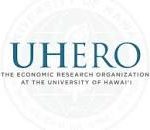
The University of Hawaii Economic Research Organization has released preliminary results from a joint study between UHERO and the Chambers of Commerce throughout the state about the impact of COVID-19 on businesses and workers. Carl Bonham of UHERO talked Monday morning with the State House Select Committee on COVID-19 Economic and Financial Preparedness.
UHERO got responses from 623 businesses within the span of one week. The survey collected information on the number of employees each company employed in January of this year and the number that were still on payroll in April. UHERO also asked businesses to provide their revenue in 2019 and to estimate what it will look like in 2020, if they could make an estimate.
In total, businesses reported reducing their workforces by about 220,000 full- and part-time workers during the COVID-19 economic shutdown. Some of the hardest hit:
–Accommodations—hotels—reported an 83% loss of workers and an anticipated 49% loss in revenue for 2020.
–Arts, entertainment, and recreation reported a 78% loss of workers and an anticipated 68% loss of revenue for 2020.
–Food services reported a 58% loss of workers and an anticipated 48% loss of revenue for 2020.
–Retail reported a 76% loss of workers and an anticipated 19% loss of revenue for 2020.
Bonham said most of the businesses surveyed anticipate being able to open and staff-up as soon as it is safe to do so. Around 60% said they could return to full staff almost immediately, with the rest phasing in as tourism returns to the Islands.
But the data suggest that the Small Business Administration PPP forgivable loan program may not be enough to sustain many businesses. It will certainly help increase the retention of workers, primarily in part-time positions. But 24% of the businesses surveyed said that if no additional support is made available to them, they do not see their business surviving, and another 32 percent said they anticipate needing to make more staff cuts in order to survive.
One of the findings is that the employees most affected tend to be some of the most vulnerable – what are sometimes referred to as “ALICE” families (Asset Limited, Income Constrained, Employed).
The entire report is here.